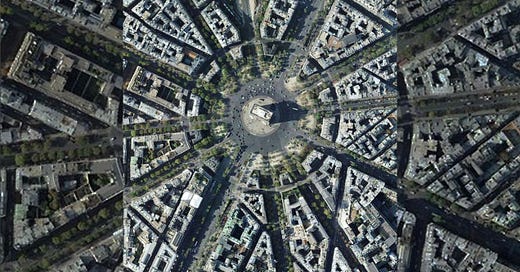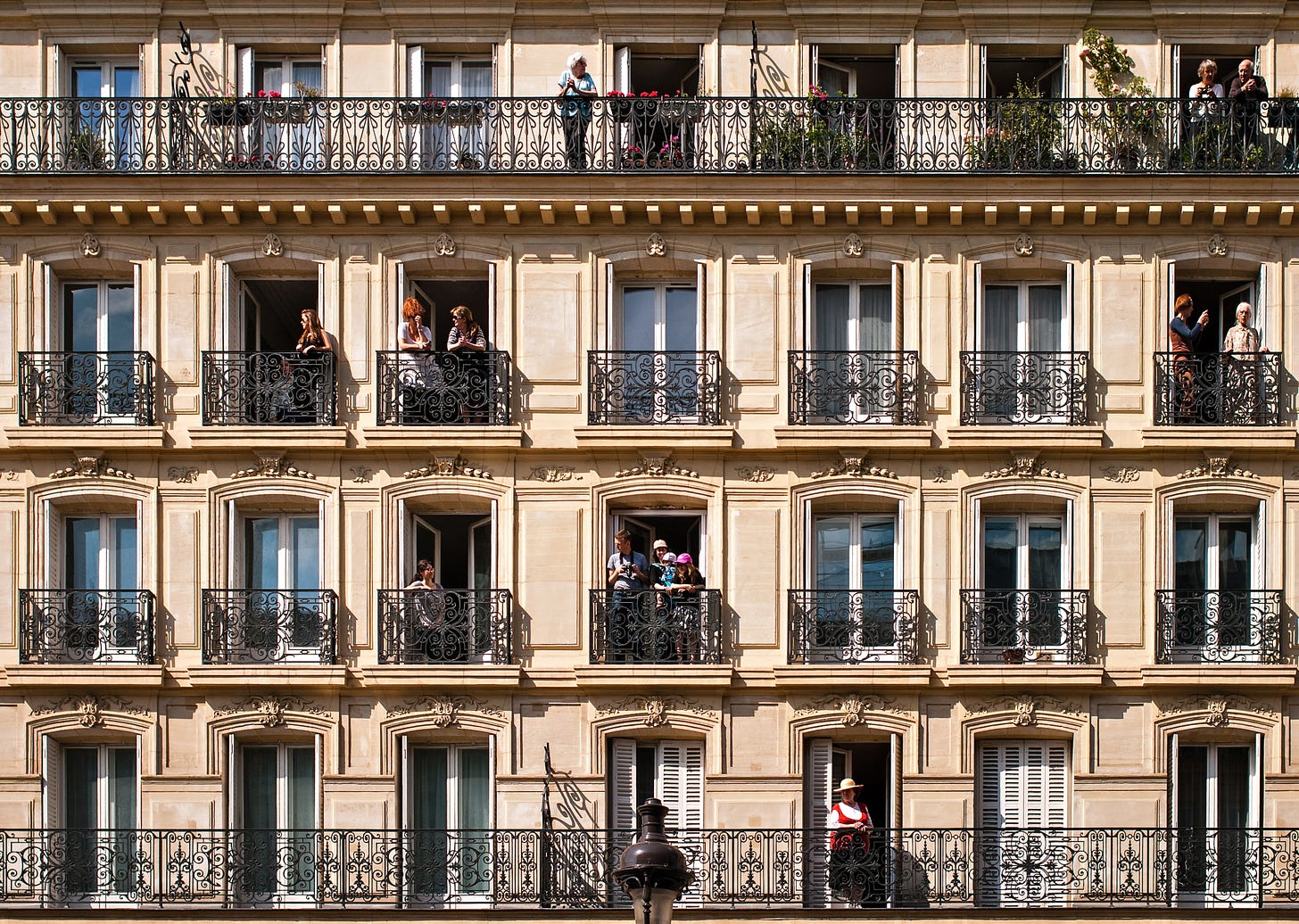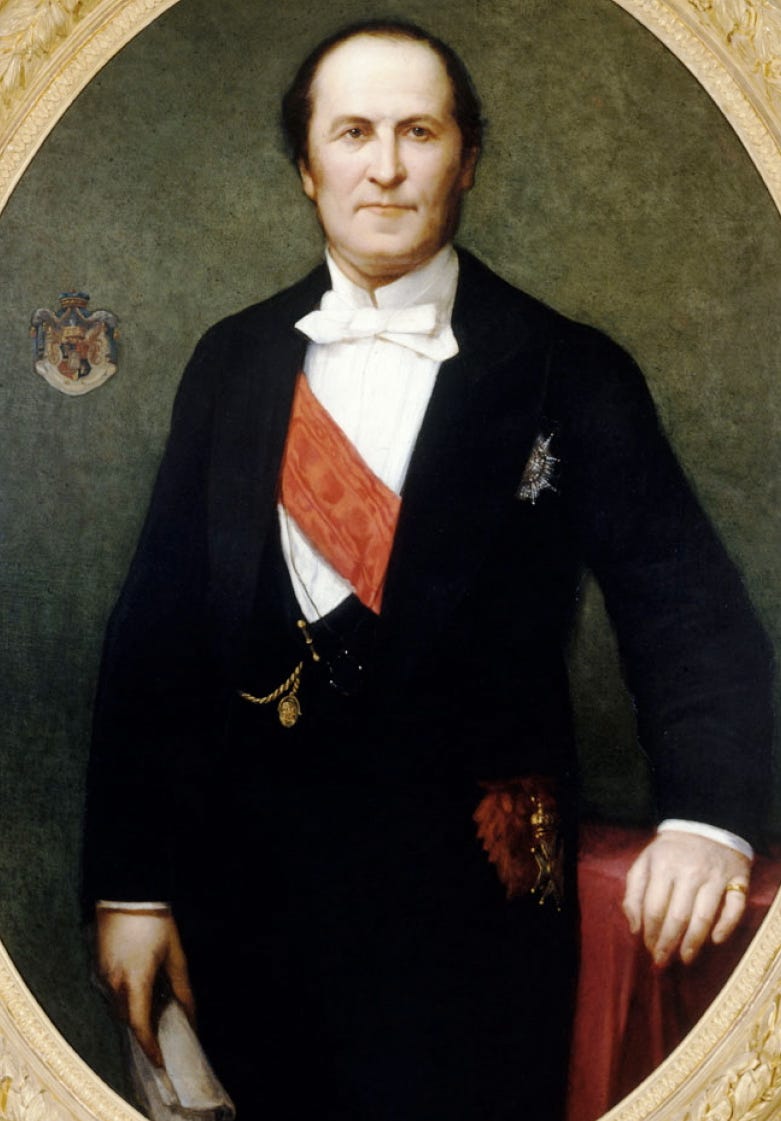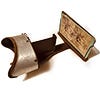Paris Street; Rainy Day, painted in 1877 by Gustave Caillebotte, depicts the wide boulevards of Haussmann's Paris in an Impressionist style.
Charles Marville’s 1853 photograph of the Rue des Marmousets shows a typical Paris street before Haussmann’s plans were implemented.
Haussmann’s ‘Modern Classicism’ Transformed Paris
“Paris is an immense workshop of putrefaction, where misery, pestilence and sickness work in concert, where sunlight and air rarely penetrate. Paris is a terrible place where plants shrivel and perish, and where, of seven small infants, four die during the course of the year.” – Victor Considerant
Considerant was a social reformer who had this to say about the city on the Seine in 1845. Suffice it to say that Paris in the middle of the nineteenth century was still a dirty crowded medieval city whose plan was still essentially the same as it had been in the Middle Ages. Cholera ran rampant, traffic circulation was a disaster.
Then there were the riots. Beginning around 1830, the residents of these crowded neighborhoods had begun throwing up barricades and revolting. They had to be dispersed by armed troops. Voltaire noted that it was a place of contrasts. The façade of the Louvre, he said was beautiful, but “it was hidden behind buildings worthy of the Goths and Vandals.”
Quatremère de Quincy was an architectural commentator in the eighteenth century who proposed opening up the city with avenues and squares. Groups of artists and designers continued to press for changes. Their crusade really wasn’t a new one. Leonardo, in the fifteenth century, had drawn plans for a more open type of city with plazas and canals.
It took the overthrow of the French Monarchy in 1848 to bring about massive changes to the design of the city. Charles-Louis Napoléon Bonaparte came to power and set about building a capital worthy of his Second Empire. He began a robust program of creating the canals, open plazas, and wide boulevards we associate with the city today.
On June 2, 1853 he appointed Georges-Eugène Haussmann Prefect of the Seine. Napoleon showed Haussmann a map of Paris and gave him a mission: “aérer, unifier, et embellir!” He promptly set to the task of building the grande croisée de Paris, improving traffic circulation through the city. The wide Rue de Rivoli was the first wide avenue of modern Paris. It was rushed to completion for the 1855 World’s Fair, the Exposition Universelle des produits de l'Agriculture, de l'Industrie et des Beaux-Arts de Paris 1855.
The rebuilding of Paris, began by Haussman, would continue until 1927. The broad avenues lined by neoclassical façades and punctuated by triumphal arches were all part of a campaign to modernize Paris. Robert A. M. Stern would have loved it! In fact, the Second Empire Style brought together Classical elements, Beaux Arts design, and modern materials, much in the manner employed by RAMSA in their work in the twentieth century.
But the enforced uniformity of Haussmannien architecture led to the inevitable revolution. In 1882 and 1884 legislation was passed allowing variation in facades along the streets. Le Corbusier proposed a total redesign of the city. [1.] He would have replaced Hausmann’s architecture with modern towers. His plan would have separated automobiles from public plazas, but would have resulted in a very sterile Paris.
In the 1970s, Haussman’s work received new appreciation as modernism’s discordant street blocks were seen in contrast to the beautiful uniformity of the Second Empire avenues. The city had survived the great wars of the twentieth century, and Haussmann’s great works were now firmly established as part of its pattern. The cities that had been destroyed in war had been built back in blocks of towers similar to those proposed by Le Corbusier. These Microrayons, with their concrete minimalism, underscored the value of the beauty created by Haussemann.
26 Rue Soufflot. Here is a typical street facade in the style of Haussmann. — Photo by Roscoe (CC)
The Avenue de l'Opera, Sunlight, Winter Morning. — 1898 by Camille Pissarro
Georges-Eugène Haussmann. Painting by Henri Lehmann











